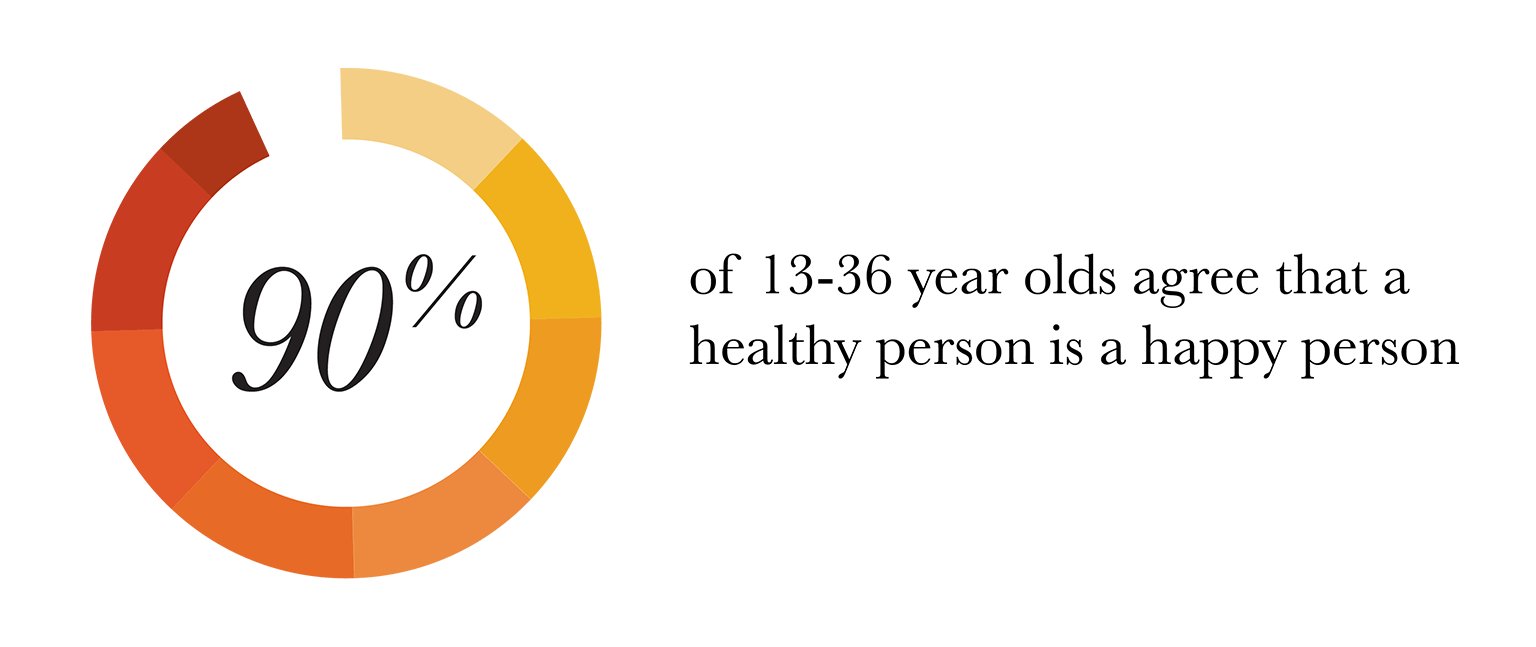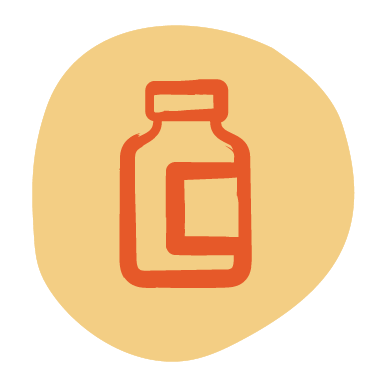
Bursting the Wellness Bubble
The COVID-19 pandemic has left no sector, society, or consumer unchanged, and the wellness category, which has always grown at the speed of trends, is no exception. The pandemic simultaneously deepened consumers’ need for wellness on a massive scale while dismantling the gyms, salons, spas, and studios that the category was built upon. This unique collision of forces has fueled one of the category’s most rapid and seismic evolutions to date.
Pre-pandemic was a golden era of expansion for wellness. Between 2015-2017, the wellness category was growing at twice the rate of the global economy, with a 6.4% annual growth rate that ballooned into a $4.5T global market1.

In this expansion, wellness came to represent much more than the absence of disease. A perpetual self-improvement project for the aspirational consumer, the wellness quest was impossible to ignore and hard to resist – but also a tall order to keep up with, demanding constant engagement and continuous levelling-up of investments in time and money. In 2019, 87% of 13-36 year olds had focused on improving an area of their health in the year prior, spending a total $158 billion doing so2. On average, US consumers were investing $155 each month on wellness – a lifetime value of $112k.
Wellness had become an obsessive, yet elusive, aspiration.
Enter COVID-19. Wellness spaces became more of a threat to health and wellbeing than enabler. Pseudo-scientific benefits and spiritual escapism couldn’t protect consumers from the contagion, and the pause gave consumers the chance to reevaluate the tangible value and ROI of their more esoteric wellness investments.
This spurred some inevitable and existential questions: Are we more well as a result of all this wellness? What do we let go when nobody’s watching? Do we even want to go back to yoga studios? Should we be spending this much on something that hasn’t quite delivered what it promised?
We believe the next generation of growth for the category will be driven by a shift from the esoteric to the essential.
Consumers and brands alike are reexamining the elemental foundations of wellness for the here and now (not just for an aspirational future). This is laying new paths to growth that are grounded in universal and essential needs – and pose the category to play an even greater role in more peoples’ lives. Said simply: we are focusing on the fundamentals.

Consumers will desire effective, everyday solutions that keep their bodies protected and safeguarded from disease, with a refocus on timeless immunity-boosting staples like sleep, stress, and nutrients. As experts have become influencers and trustworthy information life-saving, credibility is the new currency of wellness. Brands will increasingly invigorate their offerings through new evidence-driven customer experiences.
From telehealth to Peloton, digital-physical mashups will continue to redefine the health and fitness landscape as consumers take on wellness from the safety of their homes. Spas will feel increasingly clinical and science-driven, and MedSpas will take on broader concerns beyond the skin deep with expanded menus of lab testing and health services.
Rising star: WellSet is not just a Yelp for wellness providers; the digital booking platform is out to make preventative healthcare more accessible by building credibility for the wellness category at large. Wellness providers across over 30 modalities are peer-reviewed and background checked, with credentials and reviews made public.

After a year of stress, loss, and pervasive uncertainty, resilience and fortitude of mind, body, and spirit are more important than ever. From mental health to stress management to financial planning to mindfulness, brands are helping consumers build the internal muscles to better manage turbulent times and unforeseen futures.
Stress tracking is the new step tracking, and digital mental health solutions will continue to multiply, from inclusive and accessible therapy alternatives to modern tools for mindfulness. Resilience also will be a major theme in financial wellness, as employee wellness programs and new financial products are designed around benefits that are made to last.
Rising star: Cove is the latest breakthrough among health-monitoring wearables, pioneering ‘stress-cancelling’ technology that uses gentle vibrations to activate the parts of the brain that regulate stress, improving resilience for more balanced days and restful nights.

Forced isolation has shown us that social closeness is a critical component of our health and wellbeing – so much so that millions continue to risk their physical health in pursuit of minimal amounts of social interaction. Moving forward, consumers will place new value on the health of their relationships and quality of their connections as a gauge of their overall wellness, and brands will focus new emphasis on deepening these connections to enhance wellbeing benefits.
From sexual wellness solutions that deepen romantic connection, to new approaches to end-of-life and death care that support closeness and community healing, notions of self care will expand to include community care. Former spas and studios will increasingly feel more like wellness social clubs, and pent up demand for communal experiences will drive a new generation of ways to get better together.
Rising Star: Remedy Place is a social wellness club in LA: a self care destination that enhances both your health and your social life at the same time. Positioned as a social environment without any of the temptations, Remedy Place offers treatments and experiences meant to be shared with loved ones, or enjoyed solo.

2020 was the year of the at-home stylist, trainer, chef, and practitioner. Wellness brands embraced “teach me how to fish” survival strategies to stem off permanent closures, in turn empowering and educating a new class of wellness consumers. DIY will be the new DTC for wellness brands of tomorrow, as consumers continue to flock to at-home and accessible twists on familiar wellness services and experiences.
While (we hope) the DIY-haircut is not here to stay, consumers will expect adaptive and fluid wellness solutions that can meet them where they’re at. This a democratizing shift that is knocking down barriers to entry to the category; from at-home diagnostics to self-guided therapies to the backyard gym, wellness-for-all is finally here.
Rising Star: EverlyWell is an at-home health testing kit startup that delivers over 30+ tests, from food sensitivity, thyroids and allergies to COVID-19 test kits. With personalized results and health insights, EverlyWell is a platform for self discovery – made accessible through affordable and transparent pricing.
“Every brand, in some way, is a wellness brand now.” -Agathe Guerrier, co-Chief Strategy Officer, TBWA\Worldwide3
As we reemerge into life with a vaccine, every brand will be in the business of wellness with a role to play in supporting the safe and healthy reopening of economies, and ensuring all consumers have support in their pursuit of essential wellness needs: safety, resilience, intimacy, and DIY self-sufficiency. If the pandemic has taught us anything, it’s that none of us are well until all of us are well.
CITATIONS:
- Global Wellness Institute, 2018
- YPULSE, 2019
- TBWA\Worldwide, 2020

Kate is the Head of Consumer Products North America on frog. Kate combines her passion for human behavior with her love of storytelling to bring innovative ideas to clients and their customers. Ever-obsessed with asking ‘why’, she gets her greatest satisfaction uncovering nuanced consumer insight and turning small human truths into big commercial ideas.
We respect your privacy
We use Cookies to improve your experience on our website. They help us to improve site performance, present you relevant advertising and enable you to share content in social media. You may accept all Cookies, or choose to manage them individually. You can change your settings at any time by clicking Cookie Settings available in the footer of every page. For more information related to the Cookies, please visit our Cookie Policy.